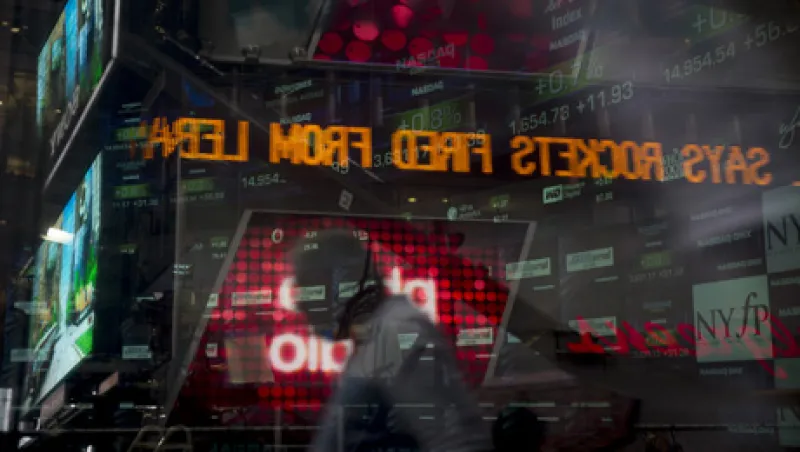What do you get when you pair a long position in Nasdaq with a short position in a Taiwanese equity index? You get one of 33 complex strategies that make up the $45.2 billion portfolio of the Global Absolute Return Strategies (GARS) Fund, sponsored by Edinburgh, Scotland–based Standard Life Investments. According to Roger Sadewsky, investment director and portfolio manager with Standard Life’s multiasset team, positive returns are possible even if the recovery in the U.S. falters. “We can make money with this strategy even if equities are the victim of some broad-based sell-off,” he says.
The GARS Fund is the largest pool of assets managed within the global balanced-funds category, according to Atlanta-based eVestment, which tracks data on 53,000 funds held by investors. Global balanced funds are “go-anywhere funds with very flexible mandates” that pursue the same level of risk as other funds but also make efforts to reduce volatility in performance, explains Todd Rosenbluth, director of mutual fund research at S&P Capital IQ in New York. “They allow the fund company or managers to alter strategies based on a top-down or macroeconomic view as to where they think the best opportunities are, not only within fixed income but also within equity asset styles,” he says.
The GARS Fund’s strategy goes long Nasdaq 100 futures and short MSCI Taiwan index futures. This approach takes into account the particular features of the U.S. and Taiwanese markets’ high-tech sectors. In the U.S. the combination of a potential increase in technology spending by corporations and continued consumer demand for high-tech products is likely to push Nasdaq stocks higher. On the other side of the GARS equity strategy, shorting the Taiwan index provides an opportunity for positive returns should the U.S. economy go south. Even if that doesn’t happen, Taiwanese companies aren’t likely to see a big windfall from the success of the U.S.-headquartered tech manufacturers that buy their Taiwanese chips and other parts. “The money is not made by the supplier of the chips,” Sadewsky explains. “It is made by Apple. It is made through the American brands and the high prices they command.”
The technology play in the U.S. and Taiwan offers an alternative for investors who are looking for equity beta but are worried about economic growth prospects, says Sadewsky. “We have a massive debate about whether equities are rich or cheap,” he adds. “We know their reliance on a growth outcome, and we know there are lots of worries in the world about the prospects for growth.”
While global balanced funds earned reduced returns during the first two quarters of 2013, they have an overall record of positive returns. The GARS Fund, for example, has averaged a 7.49 percent annual return since its inception seven years ago, with only one annual loss, in 2008, when it was down 6.33 percent, according to eVestment. Year-to-date, the strategy has a 3.29 percent return.
Global balanced funds have generally had strong fund flows during the past 13 quarters, according to eVestment. The volume of net inflows in the second quarter of this year was a record $14.57 billion, a jump from $12.1 billion in the first quarter and greater than the previous quarterly high of $14.18 billion in the second quarter of 2012.
In addition to the GARS Fund, several other large global balanced funds received large net inflows in the second quarter. Boston-based GMO’s Benchmark-Free Allocation Fund had a $2 billion net inflow, bringing its assets to $14.6 billion. Greenwich, Connecticut–based AQR Capital Management’s Global Risk Premium Fund received net inflows of $1.2 billion, raising its total assets to $23.8 billion. Pimco’s All Asset Strategy, a fund of funds heavily weighted to bonds, received a $1.6 billion net inflow, bolstering its assets under management to $43.6 billion.
By contrast, according to numbers from eVestment, the all-fixed-income category experienced a net outflow of $33.1 billion in the second quarter, breaking six straight quarters of net inflows. As for the category of all equities, there was a $41.6 billion net fund outflow in the second quarter of 2013, breaking five quarters of net inflows.
Institutional investors represent the biggest source of funds flowing into global balanced funds, according to Michael Mendelson, portfolio manager of risk parity strategies at AQR Capital. “The strategy has become mainstream,” he says, “because the recognition that most funds simply have too much reliance on equity risk has become fairly broadly accepted.”
Read more about trading and technology.






